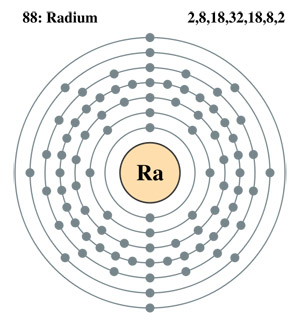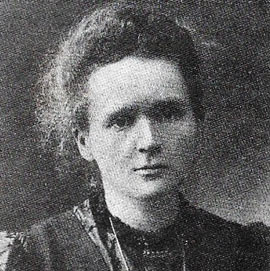radium

Electron shell diagram for radium.
Radium (Ra) is a rare, brilliant-white, luminescent, highly radioactive, metallic element having 16 isotopes (4 of them natural – radium 226, 228, 224, and 223) of which radium 226 (Ra266), with a half-life of 1,622 years is the most common. The gas radon is a decay product. Radium is one of the alkaline earth metals. It has white salts which turn blue as the radium decays, and which emit a blue glow due to ionization of the air by radiation.
 |
| Marie Curie was the first person to win two Nobel prizes; one in physics, the other in chemistry. She discovered polonium and radium and was responsible for much of the early research on radioactive elements.
|
Radium was used in cancer radiotherapy (but has been superseded by other radioisotopes, such as cobalt 60) and as a constituent of luminescent paints, and is used as a neutron source for some research purposes. It was discovered in pitchblende (1898) by Pierre and Marie Curie, and first isolated in metallic form by Marie Curie in 1911.
| atomic number | 88 |
| relative atomic mass | 226.025 |
| relative density | 5.0 |
| melting point | 700°C (1,292°F) |
| boiling point | 1,737°C (3,157°F) |


